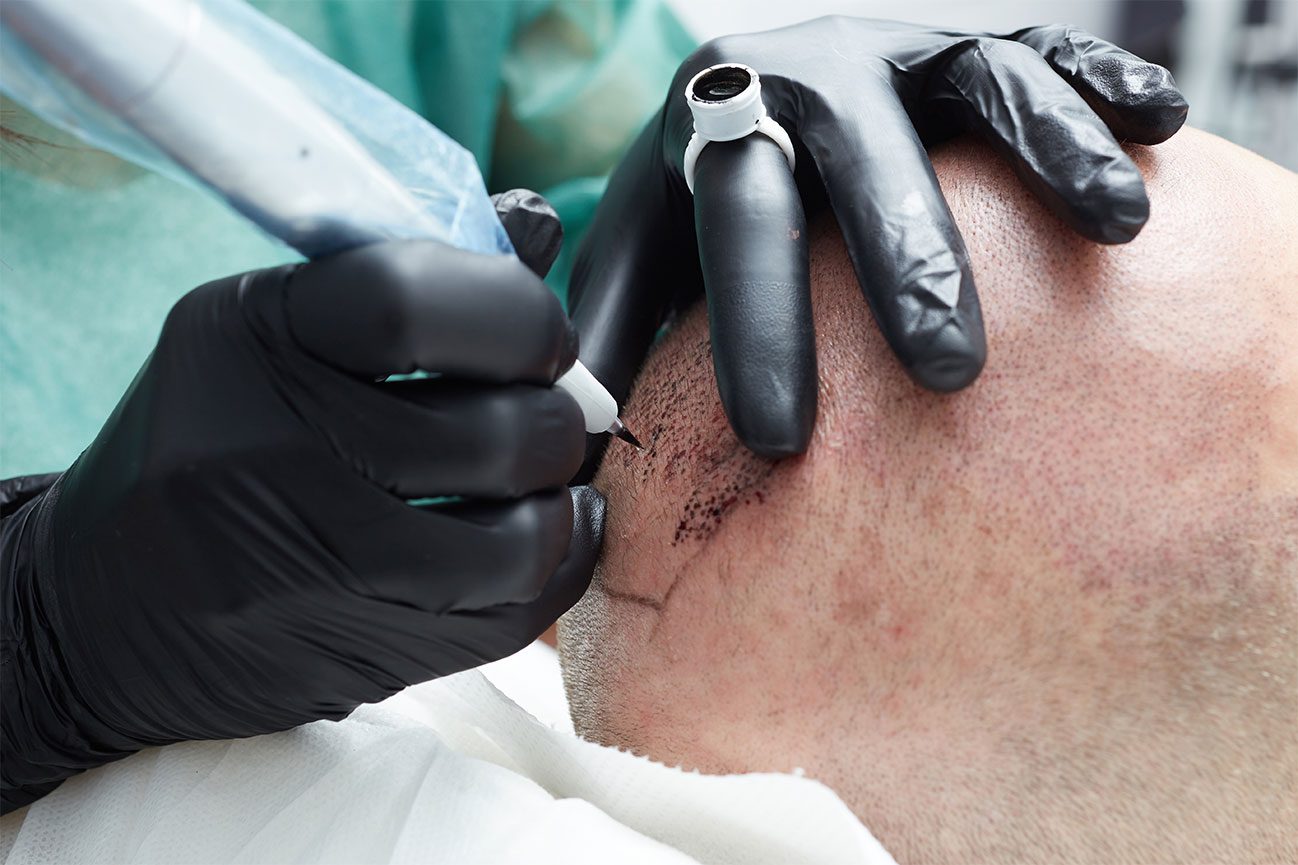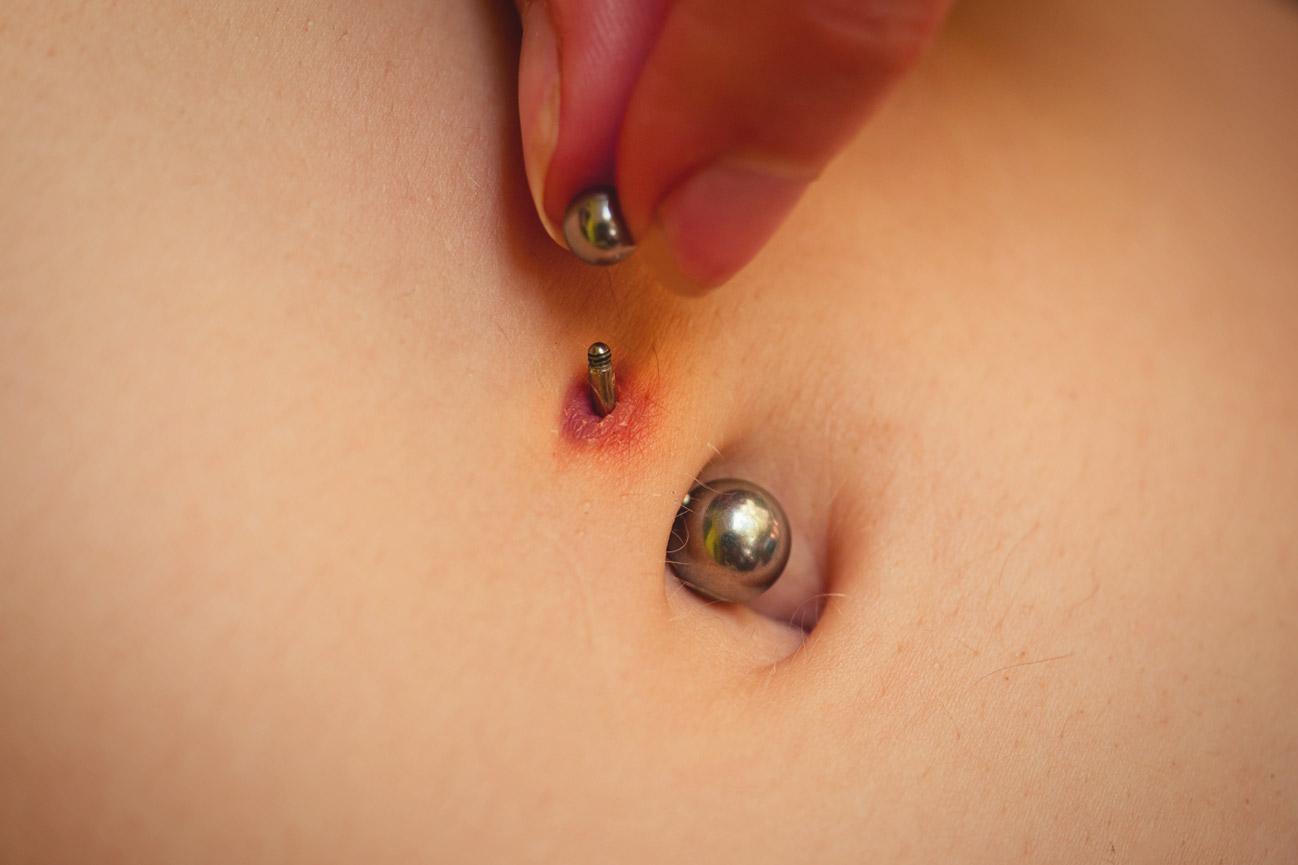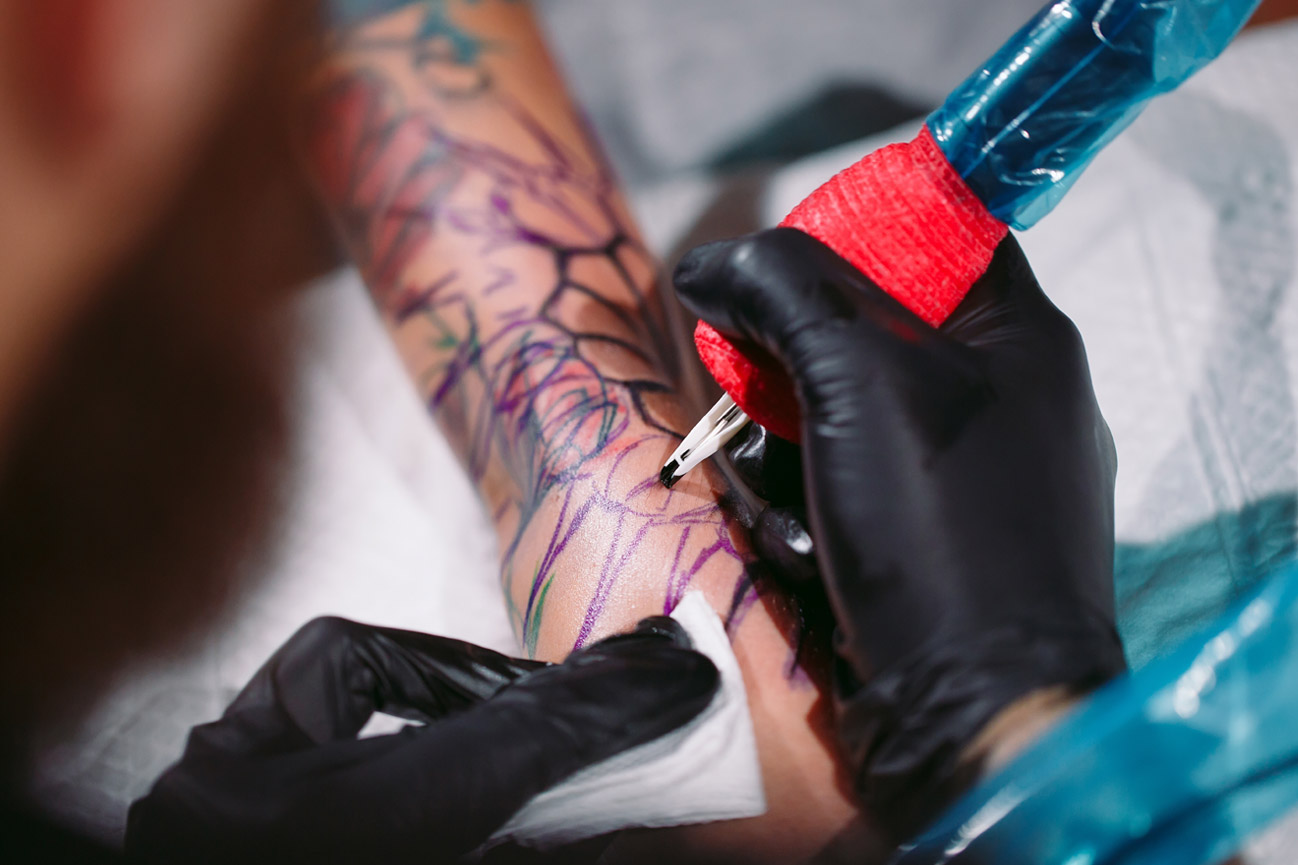Introduction to Scalp Micropigmentation:
Hair loss, often a challenging experience for many individuals, can significantly impact one’s self-confidence and self-esteem. However, there’s a growing trend that empowers people to embrace their hair loss and utilize Scalp Micropigmentation (SMP), also known as hair tattooing, to enhance their self-assurance. In this comprehensive exploration, we will delve into how SMP and other tattooing techniques are revolutionizing the way individuals feel about themselves and their appearance. From effectively mimicking a buzzed head to opting for large-scale head tattoos, we’ll navigate the captivating world of hair loss and self-confidence.
The Power of Tattooing to Mimic a Buzzed Head
In recent years, Scalp Micropigmentation (SMP) has gained significant popularity as a technique to mimic the appearance of a buzzed head. This innovative procedure involves the precise application of pigments to create the illusion of hair follicles on a closely shaved scalp.
The Scalp Micropigmentation (SMP) Process
Scalp Micropigmentation (SMP) specialists use specialized equipment and a meticulously selected range of ink shades to replicate the appearance of hair follicles. The process entails the painstaking layering of ink dots or small lines to achieve the desired texture, density, and shading. This meticulous approach demands both technical skill and artistic talent, ensuring that the results are as realistic and natural-looking as possible.
The SMP Process
Scalp Micropigmentation is a meticulous procedure designed to replicate the appearance of hair follicles on a closely shaved scalp. It’s essential to understand the intricate steps involved in this transformative process:
Consultation and Assessment
The SMP journey begins with a thorough consultation between the individual and a trained SMP specialist. During this initial meeting, the specialist assesses the extent of hair loss, the desired outcome, and any specific concerns or expectations. This consultation is a critical step to ensure that the treatment plan is tailored to the individual’s unique needs.
Color Matching
Achieving a natural look with SMP relies heavily on precise color matching. SMP specialists carefully select pigments that closely resemble the individual’s natural hair color and skin tone. Customized pigments ensure that the final result appears seamless and true to life.
Design and Hairline Creation
Once the color palette is determined, the next step involves designing the hairline and creating a blueprint for the SMP treatment. This phase requires artistic skill as well as technical expertise. The hairline design considers factors such as face shape, age, and individual preferences. SMP specialists work closely with the client to achieve a hairline that complements their features and enhances their appearance.
Pigment Application
With the design in place, the actual SMP process begins. Using specialized equipment, the SMP specialist meticulously deposits pigments into the upper dermal layer of the scalp. These pigments are strategically placed to replicate the density and distribution of natural hair follicles. The specialist employs a combination of precise dots and small lines to create a realistic texture.
Gradual Building
SMP is often conducted over multiple sessions to ensure gradual building of the desired hair density. Each session allows for adjustments and enhancements to achieve the most natural-looking result. For optimal results 2-4 sessions are typically required based on the extent of hair loss, skin issues and if there are any scars present. These sessions are spaced 10 to 20 days apart to allow for healing and proper pigment settling. During the sessions, the SMP specialist meticulously applies pigments to the scalp, creating the appearance of hair follicles. While the process requires precision, it is generally well-tolerated by most individuals with minimal pain.
Healing and Aftercare
Following each SMP session, there is a healing period during which the scalp may experience some redness and minor swelling. These effects typically subside within a few days. It’s crucial to follow the aftercare instructions provided by the specialist to promote proper healing and maintain the longevity of the SMP.
During the initial hours after the procedure, it’s common to experience some redness and minor swelling. These effects are typically temporary and should subside within a few days. Here are some key points to consider during the healing and aftercare process:
Avoid Sun Exposure: Protect your treated scalp from direct sunlight and harsh UV rays. Sunscreen or a protective head covering is recommended when you’re outdoors to prevent pigment fading.
Gentle Cleaning: Keep the treated area clean, but avoid aggressive scrubbing or harsh cleansers. Use a mild, non-alcoholic cleanser to gently wash your scalp.
Moisturize: Applying a specialized moisturizer to the treated area can help maintain the appearance of your SMP. Consult with your SMP specialist for recommended moisturizing products.
Avoid Swimming: For the first few weeks after the procedure, it’s best to avoid swimming pools, hot tubs, or any activities that involve prolonged exposure to water. Chlorine and other chemicals can affect the healing process.
Patience is Key: SMP results may not be fully apparent immediately after each session. Pigments may initially appear darker but will gradually lighten and settle over time. Be patient and trust the process.
Follow Specialist Guidance: Your SMP specialist will provide specific aftercare instructions tailored to your treatment. It’s essential to follow their guidance diligently to ensure optimal healing and long-lasting results.
Touch-Up Sessions: Depending on your individual response to SMP and desired outcomes, you may require touch-up sessions to refine the appearance. These sessions can be discussed and scheduled with your SMP specialist.




